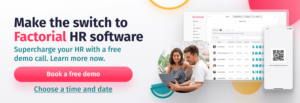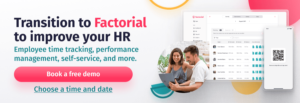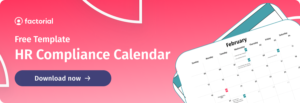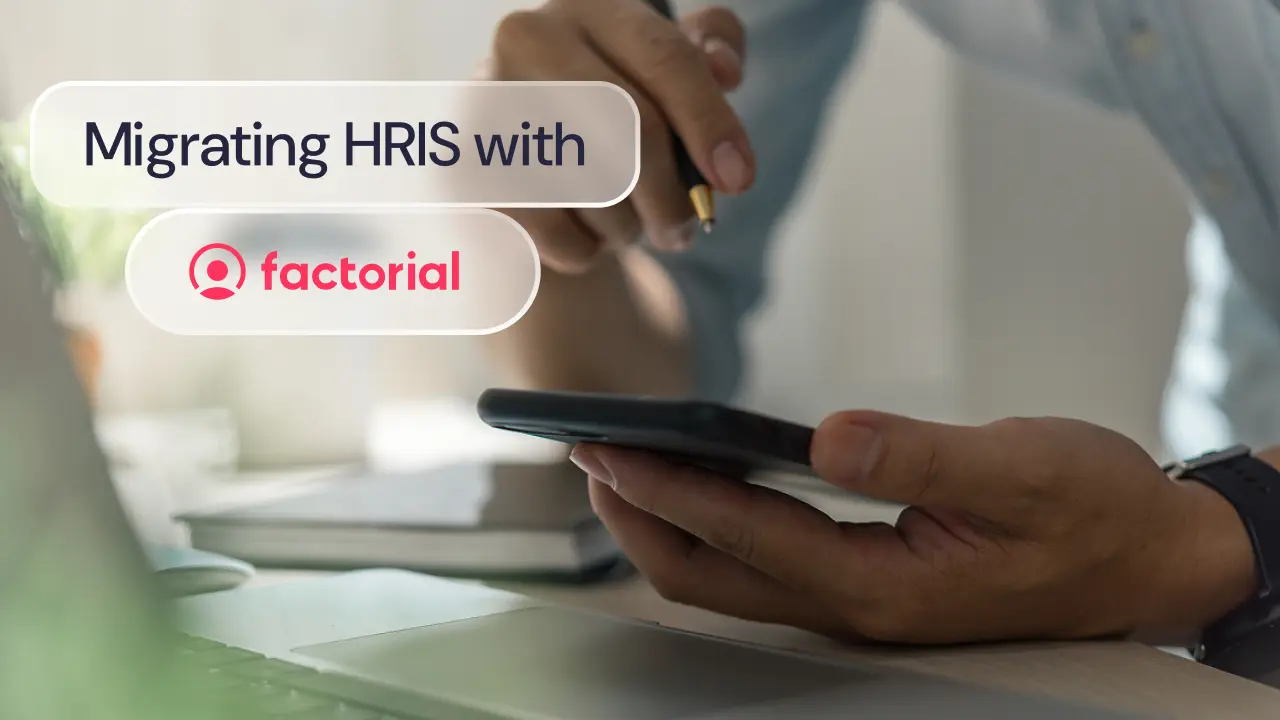All organisations with a team of people, regardless of their size, need a fit-for-purpose HRIS as a way to store and manage their people data. As your organisation changes or grows, you may realise the HRIS you once used doesn’t meet your needs anymore. Switching HR platforms should be as simple as possible.
However, making the move between two pieces of HR software can come with challenges. According to McKinsey, approximately 70% of change management programmes fail to achieve their goals, largely because of employee resistance.
So, how do you switch from one HR system to another and do it well?
Whether you are upgrading to a more advanced solution, switching to a different HR software provider, or consolidating multiple HR systems into one, a well-planned and executed transition is essential to ensure a smooth and successful migration.
From evaluating your needs and data migration to training employees and ongoing support, we will provide you with valuable insights and practical tips to navigate a transition from one HR software to another with confidence and achieve optimal results.
TABLE OF CONTENTS
- What is HR Software?
- Why is it Important to Have the Right HR Software?
- What to Consider Before the Transition
- Steps to Follow When Transitioning
- Switch to HR Software 🚀
What is HR Software?
HR software, or a Human Resources Information System (HRIS), is a centralised tool that streamlines HR management processes. It stores employee data, automates tasks, and improves efficiency.
HR software encompasses a range of functionalities and modules that cater to different aspects of HR management. These modules typically include employee information management, payroll and benefits administration, recruitment and applicant tracking, performance management, training and development, time and attendance tracking, and compliance management.
One of the primary functions of HR software is to centralise employee data in a secure and easily accessible manner. It allows HR professionals and managers to store and retrieve essential employee information such as personal details, employment history, job titles, compensation data, and performance evaluations. This way of centralizing data eliminates the need for paper-based records.
By automating routine administrative tasks, HR software saves significant time and effort for HR professionals. Tasks such as employee onboarding, leave management, and generating HR reports can be automated, reducing manual errors and increasing operational efficiency. On top of that, HR software often includes self-service portals for employees, enabling them to access and update their own information, request time off, and view company policies and announcements.
Why is it Important to Have the Right HR Software?
Having the right HR software is crucial for organizations to effectively manage their people and optimize HR processes.
Here are some key reasons why having the right HR software is key to smooth operations:
1. Streamlined Processes
The right HR software streamlines and automates various HR processes, saving time and effort for HR professionals. It eliminates manual tasks, reduces paperwork, and increases operational efficiency. Tasks such as employee data management, payroll processing and recruitment can be seamlessly integrated and automated, freeing up valuable time for HR teams to focus on strategic initiatives.
2. Centralised Employee Data
HR software provides a centralized location to store and access employee data. This eliminates the need for scattered spreadsheets, paper-based records, or multiple systems, ensuring data consistency and accuracy. Having a centralized database allows HR professionals to quickly retrieve employee information, which is particularly valuable in an emergency when emergency contacts need to be notified.
3. Improved Data Accuracy and Reporting
With the right HR software, data accuracy is enhanced. It minimizes the risk of errors caused by manual data entry and ensures that information is up to date. HR software often includes reporting functionalities, enabling HR professionals to generate comprehensive reports on various HR metrics, such as headcount, turnover and training. These reports provide valuable insights for decision-making and strategic planning.
4. Enhanced Employee Self-Service
HR software also often includes self-service portals for employees, allowing them to access and update their own information, view their pay records, request time off, and access company policies. Employee self-service reduces the administrative burden on HR teams and empowers employees to take control of their HR-related tasks.
5. Compliance
HR software helps organisations stay compliant with data protection and legislation. HRISs make it possible to store data securely in line with these regulations, and it reduces the risk of non-compliance and potential legal issues, providing peace of mind for HR professionals and the organization as a whole.
What to Consider Before the Transition
It’s important to approach the transfer between two pieces of HR software methodically. There are several important factors to consider to ensure a smooth and successful implementation. Here are some of the main areas to focus on prior to the transfer:
1. Evaluate Options
Consider factors such as features, scalability, provider reputation, user reviews, and pricing models. Choose the HR software that aligns with your organisation’s specific HR needs and long-term goals.
As part of the evaluation process, it’s important to gain a deep understanding of your organization’s current HR processes and workflows. Identify the strengths, weaknesses, and pain points in the existing system. This analysis will help determine how the new software can improve efficiency, address gaps, and align with existing workflows.
2. Involve the Organization in Decision Making
Involve key stakeholders, such as HR professionals, managers, and IT, in the decision-making process. Research shows that 42% of mid-level managers are most resistant to change, so it’s essential that these individuals are consulted.
Gather their input, requirements, and feedback to ensure the software meets their needs and expectations.
3. Integration With In-House Systems
Assess whether the new HR software can integrate seamlessly with your existing in-house systems, such as recruitment, performance management, and other HR tools. Integration ensures data consistency, eliminates duplicate data entry, and enables a more cohesive HR ecosystem.
Steps to Follow When Transitioning
As well as needing a considered approach when deciding on the right HR system, the transition process also requires careful planning and execution to ensure a successful migration.
Here are the key steps to follow during the transition process:
1. Back-Up Data
Before initiating the transition, it is crucial to back up all existing HR data. This ensures that no critical information is lost during the migration process and provides a safety net for unforeseen issues.
2. Review Your Data Retention Policy
Take the opportunity to review your organisation’s data retention policy. Identify which data should be migrated to the new system and which data can be archived or discarded in line with state legislation like the CCPA and business needs.
3. Identify What Data to Migrate
Determine the specific data elements that must be migrated to the new HR software. This includes employee information, performance data, training records, payroll details, and other relevant data. Ensure that the selected data is accurate, up-to-date, and relevant for the new system.
4. Cleanse the Data
Before transferring the data, cleanse it to ensure its accuracy and quality. Remove any duplicate, incomplete, or outdated records. This step improves data integrity and prevents issues caused by migrating flawed data into the new system. You will likely need employee involvement during this stage.
5. Plan the Transfer
Develop a detailed plan for transferring the data from the old system to the new HR software. Consider factors such as data volume, migration timeline, and potential downtime. Define roles and responsibilities for each step of the transfer process to ensure a smooth and organised transition.
6. Customize Software Settings
Customize the back end of the HR software to align with your organization’s specific needs. Set up software configurations, permissions, and user roles according to your organization’s structure and security requirements.
7. Test Functionality Before Going Live
Before fully implementing the new HR software, thoroughly test its functionality. Test various features, workflows, and user scenarios to identify and resolve any potential issues or glitches.
8. Communicate the Transfer
Inform employees and stakeholders about the upcoming system change, its benefits, and any changes in HR processes or access to information. Provide clear instructions and support channels for addressing questions or concerns.
9. System Specialist For Migration
It is beneficial to have a system specialist either in-house or readily available during the migration process. This specialist can provide expertise and guidance during the transition, ensuring a smooth data migration, system configuration, and user training. Their presence helps mitigate any potential challenges and ensures a successful implementation.
10. Train Employees And Managers
Create a comprehensive training plan to familiarize employees with the new HR software. Offer hands-on training to allow employees to ask queries during the training.
Organizations should also provide specialized training for managers who will be using the HR software for tasks such as performance management, recruitment, and reporting. Equip them with the necessary knowledge and skills to effectively utilize the new system.
11. Monitor and Fix Glitches
After the system goes live, closely monitor its performance and functionality. Be proactive in identifying and addressing any glitches or issues that arise. Provide ongoing support and ensure that the system specialist continues to be available to handle technical concerns and provide timely resolutions.
How to Transition to Factorial
You now know everything you need to know about transitioning from one HRIS to another. The next step is finding the right product for your organisation.
Factorial is an all-in-one, digital HR software that converts these never-ending, manual processes into integrated, effective ones. Our easy-to-use platform automates administrative tasks and digitizes documentation, enabling companies to transition to paperless and empowering HR professionals to make better business decisions.
Factorial allows organizations to easily:
- Centralize and digitize documents and workflows.
- Manage time, including time tracking, absence management and shift management.
- Manage talent, including performance reviews and recruitment.
…and so much more. Book a free demo now to learn more!




